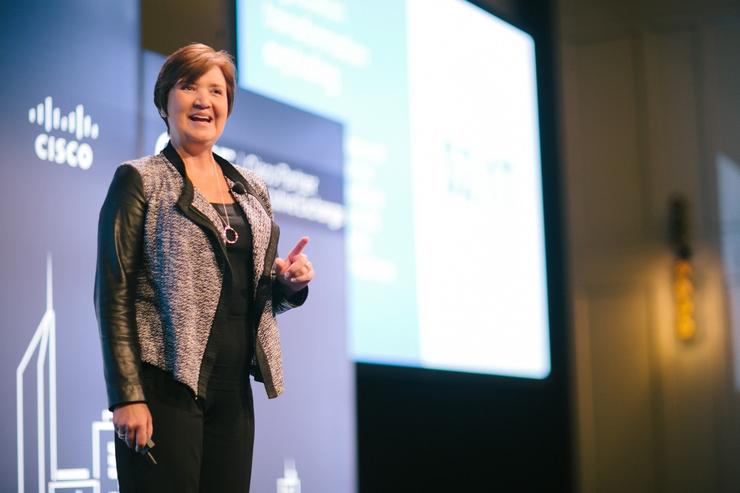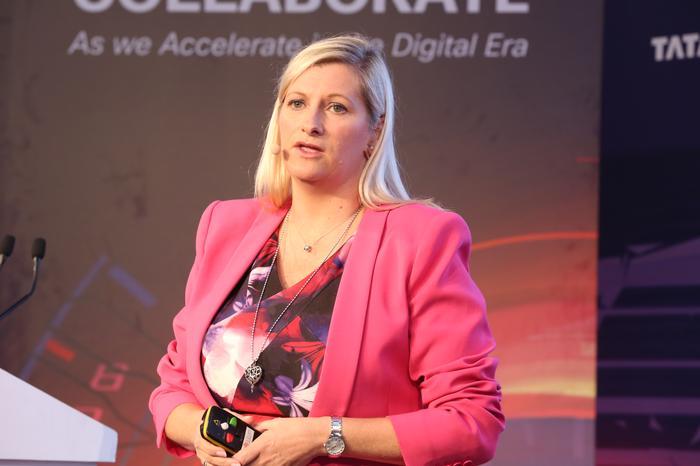
Wendy Bahr - Senior Vice President of Global Partner Organisation, Cisco
“It was naturally slow in the beginning but multi-partner is the second fastest growing part of our channel,” Bahr said. “It’s incrementally drove over US$1.1 billion during the past 12 months.”
But as an experienced channel veteran, Bahr acknowledged switching to a collaborative mindset isn’t as instinctive for traditional aspects of the industry.
“Change is always hard and especially if you have been wildly successful and we have been with our partner community for more than two decades,” Bahr said.
“But we realise this is the first step down the path of expanding value, providing an outcome and having an impact on the customer.”
Alongside the rise of managed service providers, IoT-focused specialists are emerging to build tailored solutions for line-of-business leaders, coupled with born-in-the-cloud providers capitalising on virtualised routers, security and firewalls - all sitting within a cloud marketplace.
Collectively, it paints a very different picture of what it means to be a Cisco partner in 2017.
And that’s because, quite simply, the buyer has changed.
New-look customer
Technology spending funded by non-IT business units will reach US$609 billion in 2017, as new influencers of IT emerge across the enterprise.
Representing an increase of 5.9 per cent over 2016, IDC research findings point to a changing buying landscape for the channel, one which sees line-of-business leaders gain greater control of the technology buying process.
“Our partners are beginning to understand the opportunity to sell not just to IT,” Bahr said. “We’ve had a long and wonderful history of selling to the IT department but they’re also moving into the line-of-business buyers.
“They have the budget and creating a digital impact is also often a strategic imperative.”
By 2020, IDC expects line-of-business technology spending to be nearly equal to that of the IT organisation.

Specifically, innovation accelerators have put line-of-business units in the frontline of the digital transformation.
“For example,” Bahr explained. “If you’re the marketing department, you need to know more about your customers and need to extract data out of the wireless network to know more.
“If you’re in HR you need to know how you can communicate with your employees more effectively using video in a real-time manner.
“We’re trying to connect the digital impact to the line-of-business buyer because we think that our partners - who are well positioned within convergence - can go in and have a different conversation and create a digital outcome.”
For Bahr, this new breed of IT buyers have the budget and influence to matter for partners.
“But the secret sauce is when you go back to IT and inform them about what the line-of-business leaders are doing,” Bahr said. “IT departments are just trying to keep up with the onslaught of applications and the quest for digital capabilities, which means the partner can play an important role in the middle.”
To assist the channel in digging out new buyers with new IT budgets, Cisco has created industry-focused training for partners, designed to provide specialised knowledge and expertise, aligned to particular sectors.
“We build horizontal technology solutions which can be applied to line-of-business buyers and verticals,” Bahr said.
“We’ve built industry specific training, which includes the profile of the buyer and how technologies can create an outcome, alongside details of buying indicators and the taxonomy.
“If you can’t speak the language, you’re not going to have credibility.”
In taking the role as the horizontal supplier of technology, Bahr advised partners to assess customer bases to uncover hidden vertical capabilities.
“We encourage our partners to look at their install base because they might have 30 per cent of business in retail, or 25 per cent in healthcare or 60 per cent in manufacturing,” Bahr said. “So go where your business already is and then try and adapt.”
But even when partners learn the language of industry, and recognise the key decision-makers within it, Bahr said that’s still not enough to secure the deal.
“Partners must link up with an applications provider that has written an application specific to that market,” Bahr added.




